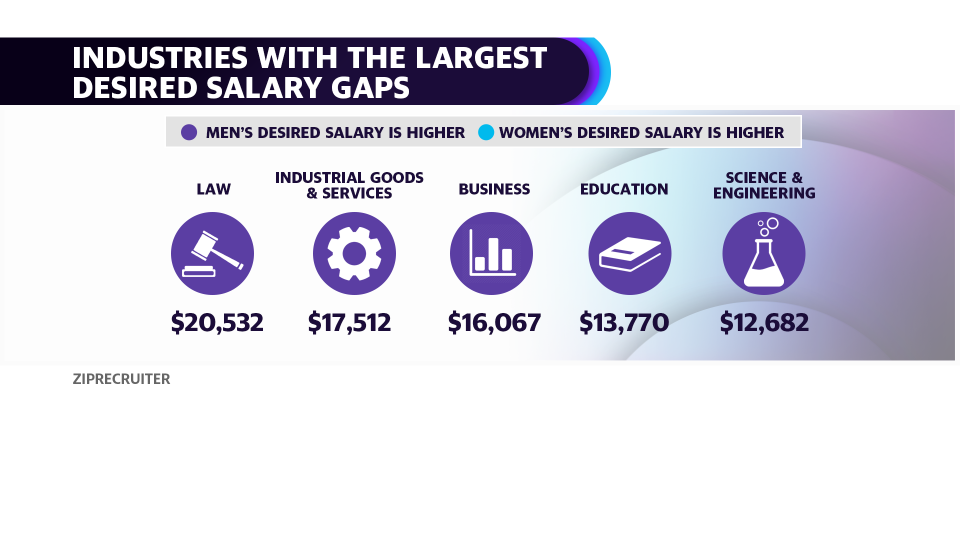Men’s desired salary is $11,000 more than women’s: ZipRecruiter
The U.S. economy added a better than expected 225,000 jobs in January, while the unemployment rate rose slightly to 3.6%, and average hourly earnings growth rose over last year.
The share of Americans in the labor force in January was the highest in almost seven years, according to the latest jobs report. And prime-age women (age 25 to 54) are leading the way. Women’s share of the workforce has been growing steadily for the past few years, and for just the second time, in December, women outnumbered men in the labor market.
What’s more, the report showed rising wages: Average hourly earnings for all workers on private nonfarm payrolls rose by 7 cents to $28.44.
But an increase in wages may not translate into a boost for women.
In industries “where pay is very rigidly set...men and women are [paid] the same,” ZipRecruiter labor economist Julia Pollak told Yahoo Finance’s “On The Move.” “But the minute employers have discretion and can set pay at the individual level, pay for women and men diverges.”
On average, men typically are seeking a salary of $59,623; women are looking for less – their average desired salary is $48,160, according to ZipRecruiter.
“Women are more risk-averse,” Pollak said, “not just in the labor market – women are less likely to invest. They're less likely to buy stocks... There is evidence that when they do it... when they put their foot forward and take the risk, they actually do better.”

In the law, industrial goods and services, business, education, and science and engineering fields, men’s desired salary is nearly $12,000 to $20,000 more than women’s desired salary.
Meanwhile, in categories including home and garden, personal care, transportation, food and beverage and real estate, the gap between men and women’s desired salary is far less, ranging between $256 to nearly $6,000.
And although women typically seek lower salaries, they already face a disadvantage when it comes to pay, said Pollak.
“There are researchers who have coached actors in salary negotiations to do exactly the same thing to follow the same script,” she said. “Even when men and women ask at the same rate, men are more likely to receive.”
But Pollak is optimistic this will change. Recently, women have taken a unique approach, like an anonymous Google (GOOG) spreadsheet that aims for salary transparency, highlighting how much women are making in tech jobs.
In other positive news, a recent report from Pew Research Center found that women’s earnings increased by more than men’s between 1980 and 2018, especially in high-skilled jobs. (Pew defined these as “jobs in which social, fundamental, analytical or managerial skills are more important.”) “Overall, the average hourly wage at the workplace increased 24% from 1980 to 2018, from $19 to $24. Women’s earnings rose at a greater rate over the period, by 45%, from $15 in 1980 to $22 in 2018. In contrast, men’s wages increased 14%, from $23 to $26,” according to Pew.
Women can “find female mentors, they can get as much information as they want on social media,” Pollack said. She also encourages more women to aspire to reach for those traditionally male-dominated roles like jobs in sales. “Hiring managers would love to hire women and promote them into management to get more women into that kind of role,” she said.
Brooke DiPalma is a producer for Yahoo Finance. Follow her on Twitter at @BrookeDiPalma.
READ MORE:


